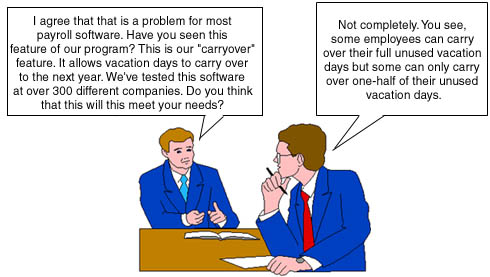
◙◙◙◙◙◙◙◙◙◙◙◙◙◙◙◙◙◙◙◙◙◙◙◙◙◙◙◙◙◙◙◙◙◙◙◙◙◙◙◙◙◙◙◙◙◙◙◙◙◙◙◙◙◙◙◙◙◙◙◙◙◙◙◙◙◙◙◙◙◙◙◙◙◙◙◙◙◙◙◙◙◙◙◙◙◙◙◙◙◙◙◙◙◙◙◙◙◙◙◙◙◙◙◙◙◙◙◙◙◙◙◙◙◙◙◙◙◙◙◙◙◙◙
Some of the preceding research is based on bargaining studies. However, much of the research in the field of persuasion assumes that a person is simply making a speech before an audience -- it does not assume that a person is engaged in a conversation with another who may ask questions, raise objections, or present a counter-proposal.
Other work (see Kipnis, Schmidt, & Wilkinson, November, 1987, Psychology Today) suggests that when people influence others in more natural interactive settings (such as the workplace) that they tend to use one of several techniques. Sometimes people use them in combination. These are listed below:
Logical Reasoning. This involves more than simply making assertions. Logical Reasoning involves providing useful information to support and/or to guide the discussion toward the preferred options. Using logic and facts to support and/or lead to a proposal is the most popular technique among those surveyed. And it is a preferred technique among those who are recipients of influence attempts. But in order to use this approach effectively, you must be thoroughly prepared!
Assertiveness. Here, the person simply and repeatedly states what he believes is true or good (or what he wants). The person is sometimes even confrontational. One common problem with assertiveness is that people often assume that if they say something is good, then the other person will believe it too, even if they have objections and concerns. It is akin to the old lawyer's adage, "Use facts, but if the facts are not in your favor, talk louder and pound the podium." Simply being assertive is often not as effective as we'd like. Even if it is effective, it may occasionally cause resentment if the other person feels he was "cowed" or "bullied" into an agreement.
Ask Questions. Often it is better to ask questions than to simply make assertions; sometimes it is even better than logical reasoning. By asking questions you can discover precisely what the other person's position is and you can try to gently guide them to see things from your point of view. One study (N. Rackham, 1976) compared skilled and average negotiators and found that the skilled negotiators spent 21% of their time asking questions of the opponent; by contrast, average negotiators spent only 10% of their time asking questions.
Suppose, for example that you are trying to sell a prospective client a new payroll software program:

Now how should you respond to this objection?
You could be assertive (with a dash of logical reasoning).

Sounds good, but what is the problem with this approach?
You still don't know how they "do vacations" at this company!
Perhaps a different response would be to use questions with some strategically-placed logical reasoning:




Using questions is sort of like the difference between the "advice" columns in the newspaper and counseling. A wise counselor guides the client to the "well-adjusted" or "healthy" options. He doesn't just tell the person what to do. He often uses questions (combined with a lot of listening) to guide them. Perhaps we should all be a bit more like counselors (using a lot of listening and some questions) when we bargain.
|
Review question: |
||
| Which generally works better? Asking questions? Or making assertions? | ||
| Asking questions | ||
|
|
Making assertions | |
|
|
Both generally work equally well. | |
◙◙◙◙◙◙◙◙◙◙◙◙◙◙◙◙◙◙◙◙◙◙◙◙◙◙◙◙◙◙◙◙◙◙◙◙◙◙◙◙◙◙◙◙◙◙◙◙◙◙◙◙◙◙◙◙◙◙◙◙◙◙◙◙◙◙◙◙◙◙◙◙◙◙◙◙◙◙◙◙◙◙◙◙◙◙◙◙◙◙◙◙◙◙◙◙◙◙◙◙◙◙◙◙◙◙◙◙◙◙◙◙◙◙◙◙◙◙◙◙◙◙◙